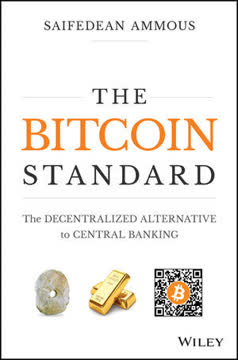Key Takeaways
1. DeFi solves five key problems in centralized finance
DeFi offers considerable potential for solving the following five key problems associated with centralized finance: centralized control, limited access, inefficiency, lack of inoperability, and opacity.
Democratizing finance. Decentralized finance (DeFi) aims to rebuild the financial system from the ground up, addressing longstanding issues in traditional finance. By leveraging blockchain technology and smart contracts, DeFi eliminates centralized control, allowing financial products to be owned collectively by the community. This democratization extends access to financial services for the unbanked and underserved populations globally.
Efficiency and transparency. DeFi significantly reduces inefficiencies in the current system, such as high fees, slow settlement times, and opaque processes. Smart contracts automate many financial operations, reducing costs and increasing speed. Additionally, the open-source nature of DeFi protocols ensures full transparency, allowing users to verify the code and understand exactly how their funds are being managed.
Interoperability and innovation. Unlike siloed traditional financial systems, DeFi protocols are highly interoperable. This allows for the creation of complex financial products by combining different "DeFi legos." The composability of DeFi unleashes a wave of financial innovation, enabling new products and services that were previously impossible or impractical in traditional finance.
2. Blockchain and smart contracts form the backbone of DeFi
Blockchains are possible because of consensus protocols – sets of rules that determine what kinds of blocks can become part of the chain and thus the "truth."
Immutable and decentralized. Blockchain technology provides the foundation for DeFi by creating an immutable, decentralized ledger. This ensures that all transactions are recorded transparently and cannot be altered retroactively. The consensus mechanisms, such as proof-of-work or proof-of-stake, ensure the security and integrity of the blockchain without relying on a central authority.
Smart contracts enable automation. Smart contracts, self-executing code on the blockchain, are the building blocks of DeFi applications. They automate financial processes, enforce rules, and execute transactions without intermediaries. Key features of smart contracts include:
- Atomicity: All conditions must be met for a transaction to execute
- Transparency: Code is visible and verifiable by all parties
- Immutability: Once deployed, the contract cannot be altered
- Trustlessness: No need to trust a central authority or counterparty
3. DeFi primitives enable complex financial products
DeFi primitives enable complex financial products with minimized friction and maximized value to users utilizing blockchain technology.
Building blocks of DeFi. DeFi primitives are the fundamental components that can be combined to create more complex financial products. These include:
- Transactions: The basic unit of interaction on the blockchain
- Fungible tokens: Divisible and interchangeable assets (e.g., ERC-20)
- Non-fungible tokens (NFTs): Unique digital assets (e.g., ERC-721)
- Custody: Ability to escrow funds in smart contracts
- Supply adjustment: Minting and burning of tokens
- Incentives: Rewards and penalties to influence behavior
- Swaps: Exchange of one token for another
- Collateralized loans: Borrowing against crypto assets
Composability and innovation. The modular nature of these primitives allows developers to create innovative financial products by combining them in novel ways. This "DeFi Legos" approach has led to the rapid development of complex instruments like yield farming strategies, synthetic assets, and decentralized insurance products.
4. Lending protocols revolutionize access to capital
Compound is a lending market that offers several different ERC-20 assets for borrowing and lending. All the tokens in a single market are pooled together so every lender earns the same variable rate, and every borrower pays the same variable rate.
Algorithmic and permissionless. DeFi lending protocols, such as Compound, Aave, and MakerDAO, have revolutionized access to capital. These platforms allow anyone to lend or borrow cryptocurrencies without intermediaries. Key features include:
- Overcollateralization: Loans are secured by crypto assets
- Liquidation mechanisms: Ensure loan health and protect lenders
- Variable interest rates: Algorithmically determined based on supply and demand
- Flash loans: Uncollateralized loans repaid within a single transaction
Innovations in lending. DeFi lending protocols have introduced novel concepts:
- Tokenized positions (e.g., cTokens): Represent ownership in lending pools
- Yield farming: Incentivizes liquidity provision through token rewards
- Credit delegation: Allows uncollateralized borrowing based on trust
- Stable borrowing rates: Provide predictability for borrowers
5. Decentralized exchanges remove intermediaries
Uniswap v2 uses a constant product rule to determine the trading price, using the formula k = x* y, where x is the balance of asset A, and y the balance of asset B.
Automated market makers. Decentralized exchanges (DEXs) like Uniswap have transformed trading by removing intermediaries and enabling peer-to-peer swaps. Key features of AMM-based DEXs include:
- Liquidity pools: Users provide assets to earn trading fees
- Constant product formula: Determines exchange rates algorithmically
- Slippage: Price impact increases with trade size
- Impermanent loss: Risk for liquidity providers due to price divergence
Innovations in trading. DEXs have introduced novel concepts:
- Flash swaps: Allow traders to borrow and repay within one transaction
- Concentrated liquidity: Uniswap v3 enables LPs to focus on specific price ranges
- Governance tokens: Give users a say in protocol development (e.g., UNI token)
6. Synthetic assets expand investment opportunities
Synthetix is one group whose primary focus is creating a wide variety of liquid synthetic derivatives.
Tokenized exposure. Synthetic assets in DeFi allow users to gain exposure to any asset, whether on-chain or off-chain, without owning the underlying. Platforms like Synthetix enable the creation of tokens that track the price of stocks, commodities, or other cryptocurrencies.
Key features of synthetic assets:
- Oracle-based pricing: Rely on decentralized price feeds
- Collateralization: Backed by overcollateralized crypto assets
- Shared debt pool: Distributes risk among all synthetic asset holders
- Infinite liquidity: No slippage when trading between synthetic assets
7. Tokenization unlocks new forms of value
Tokenization refers to the process of taking some asset or bundle of assets, either on or off chain, and representing that asset on chain with possible fractional ownership.
Fractional ownership. Tokenization allows for the division of traditionally illiquid assets into smaller, tradable units. This opens up new investment opportunities and increases liquidity for assets like real estate, art, or private equity.
Benefits of tokenization:
- Increased liquidity: Easier to buy, sell, and trade fractional ownership
- Lower barriers to entry: Smaller investment minimums
- Programmable assets: Automated dividend distributions or voting rights
- Global accessibility: 24/7 markets for tokenized assets
8. DeFi faces unique risks and challenges
As long as smart contract risk threatens the DeFi landscape, application adoption and trust will suffer as users hesitate to trust the contracts they interact with and that custody their funds.
Technical and economic risks. While DeFi offers numerous advantages, it also introduces new risks:
- Smart contract vulnerabilities: Bugs or exploits in code can lead to fund loss
- Oracle manipulation: Reliance on external data feeds can be exploited
- Governance attacks: Malicious actors can potentially control protocols
- Scalability limitations: High fees and network congestion during peak usage
- Regulatory uncertainty: Unclear legal status of many DeFi activities
Mitigation strategies:
- Code audits and formal verification
- Multi-oracle systems and decentralized price feeds
- Timelocks and multi-signature governance
- Layer 2 scaling solutions
- Regulatory compliance and self-regulation initiatives
9. The future of finance is decentralized
We see the scaffolding of a shining new city. This is not a renovation of existing structures; it is a complete rebuild from the bottom up.
Paradigm shift. DeFi represents a fundamental reimagining of the financial system, offering the potential for greater efficiency, accessibility, and innovation. As the technology matures and adoption grows, DeFi is poised to disrupt traditional finance and create new economic opportunities globally.
Key trends shaping the future of DeFi:
- Institutional adoption: Traditional financial firms integrating DeFi services
- Improved user interfaces: Simplified access for non-technical users
- Cross-chain interoperability: Seamless asset and data transfer between blockchains
- Real-world asset integration: Tokenization of traditional financial instruments
- Regulatory frameworks: Development of clear guidelines for DeFi activities
Last updated:
FAQ
What's "DeFi and the Future of Finance" about?
- Overview of DeFi: The book explores decentralized finance (DeFi), a new financial system built on blockchain technology that aims to replace traditional financial infrastructure.
- Authors' Perspective: Written by Campbell R. Harvey, Ashwin Ramachandran, and Joey Santoro, it provides insights into how DeFi can solve inefficiencies and limitations of centralized financial systems.
- Comprehensive Guide: It covers the origins, infrastructure, and potential of DeFi, offering a detailed look at its components like smart contracts, stablecoins, and decentralized applications.
Why should I read "DeFi and the Future of Finance"?
- Understanding DeFi: The book is essential for anyone looking to understand the rapidly growing field of decentralized finance and its implications for the future of global finance.
- Expert Insights: With contributions from leading experts, it offers a well-rounded perspective on the benefits and challenges of DeFi.
- Future of Finance: It provides a vision of how DeFi could transform financial systems, making them more inclusive, efficient, and transparent.
What are the key takeaways of "DeFi and the Future of Finance"?
- Five Key Problems: The book identifies five major issues with centralized finance: centralized control, limited access, inefficiency, lack of interoperability, and opacity.
- DeFi Solutions: It explains how DeFi addresses these problems through decentralized applications, smart contracts, and blockchain technology.
- Risks and Opportunities: The book also discusses the risks associated with DeFi, such as smart contract vulnerabilities and regulatory challenges, while highlighting the transformative potential of this technology.
What are the best quotes from "DeFi and the Future of Finance" and what do they mean?
- "DeFi is a true 'internet of money.'": This quote emphasizes the potential of DeFi to create a global, open network for value transfer, similar to how the internet revolutionized information sharing.
- "We see the scaffolding of a shining new city.": This metaphor illustrates the authors' vision of DeFi as a foundational change in finance, building a new system from the ground up.
- "DeFi offers 'composability,' allowing new applications to easily and immediately interoperate with any other applications that already exist.": This highlights the flexibility and interconnectedness of DeFi applications, which can be combined to create innovative financial products.
How does "DeFi and the Future of Finance" define decentralized finance (DeFi)?
- Peer-to-Peer System: DeFi is described as a financial system where peers interact directly via a common ledger, eliminating the need for centralized institutions.
- Blockchain-Based: It utilizes blockchain technology to create open-source financial building blocks that can be combined into sophisticated products.
- Permissionless and Transparent: DeFi is characterized by its open access, global reach, and transparency, allowing anyone to participate without needing permission from a central authority.
What are the five key problems of centralized financial systems according to "DeFi and the Future of Finance"?
- Centralized Control: Central banks and financial institutions have significant control over money supply and interest rates, limiting competition and innovation.
- Limited Access: A large portion of the global population remains unbanked, with limited access to financial services and credit.
- Inefficiency: High transaction costs, slow processing times, and lack of interoperability are common inefficiencies in traditional finance.
- Opacity: Consumers often lack transparency regarding the financial health of institutions and the competitiveness of rates offered.
- Lack of Interoperability: Financial systems are siloed, making it difficult to move money or integrate services across different platforms.
How does "DeFi and the Future of Finance" propose DeFi solves these problems?
- Decentralized Control: DeFi removes the need for centralized intermediaries, allowing users to control their own financial activities.
- Increased Access: By lowering barriers to entry, DeFi provides financial services to anyone with internet access, including the unbanked.
- Efficiency Gains: Smart contracts and blockchain technology reduce transaction costs and processing times, improving overall efficiency.
- Enhanced Transparency: Open-source protocols and public ledgers provide greater transparency and trust in financial transactions.
- Interoperability: DeFi applications are designed to work together seamlessly, enabling new financial products and services to be built on existing infrastructure.
What is the role of smart contracts in DeFi according to "DeFi and the Future of Finance"?
- Automated Execution: Smart contracts are self-executing contracts with the terms of the agreement directly written into code, automating financial transactions.
- Trustless Environment: They eliminate the need for intermediaries, allowing parties to transact directly with each other in a trustless manner.
- Flexibility and Innovation: Smart contracts enable the creation of complex financial products and services, fostering innovation in the DeFi space.
What are stablecoins and how are they used in DeFi as explained in "DeFi and the Future of Finance"?
- Price Stability: Stablecoins are cryptocurrencies designed to maintain a stable value relative to a target asset, such as the US dollar, reducing volatility.
- Types of Stablecoins: The book discusses fiat-collateralized, crypto-collateralized, and non-collateralized stablecoins, each with different mechanisms for maintaining stability.
- Role in DeFi: Stablecoins provide a stable medium of exchange and store of value within the DeFi ecosystem, facilitating transactions and lending.
What are the risks associated with DeFi as outlined in "DeFi and the Future of Finance"?
- Smart Contract Risk: Vulnerabilities in smart contract code can lead to hacks and loss of funds, posing a significant risk to DeFi platforms.
- Governance Risk: Decentralized governance models can be susceptible to manipulation or poor decision-making by token holders.
- Oracle Risk: Reliance on external data sources (oracles) introduces risks if the data is inaccurate or manipulated.
- Regulatory Risk: As DeFi grows, it may face increased regulatory scrutiny, potentially impacting its development and adoption.
How does "DeFi and the Future of Finance" envision the future of finance with DeFi?
- Transformational Potential: The authors believe DeFi has the potential to fundamentally transform the financial system, making it more inclusive and efficient.
- Global Financial System: They envision DeFi becoming the primary financial system worldwide, offering universal access to financial services.
- Innovation and Growth: DeFi is expected to drive innovation in financial products and services, attracting entrepreneurs and developers to build the financial infrastructure of tomorrow.
What are the main components of DeFi infrastructure as described in "DeFi and the Future of Finance"?
- Blockchain Technology: Serves as the backbone of DeFi, providing a decentralized and immutable ledger for transactions.
- Cryptocurrencies: Digital tokens used within DeFi for transactions, lending, and as collateral.
- Smart Contracts: Automated contracts that execute transactions based on predefined rules, enabling complex financial interactions.
- Decentralized Applications (dApps): Applications built on blockchain platforms that offer financial services without intermediaries.
Review Summary
DeFi and the Future of Finance receives mixed reviews, with an average rating of 3.5/5. Readers appreciate its insights into decentralized finance and blockchain technology, praising its structured approach and comprehensive overview. However, some find it too complex for beginners and quickly outdated. Critics argue it lacks real-world examples and clear explanations of DeFi's problem-solving potential. The book is recommended for those with prior knowledge of finance and crypto, offering valuable information on DeFi protocols, risks, and potential impact on traditional finance.
Similar Books









Download PDF
Download EPUB
.epub digital book format is ideal for reading ebooks on phones, tablets, and e-readers.




